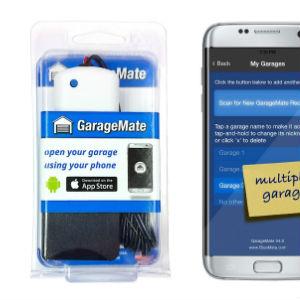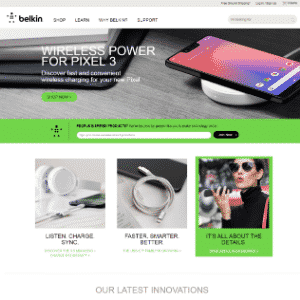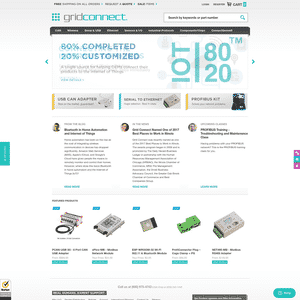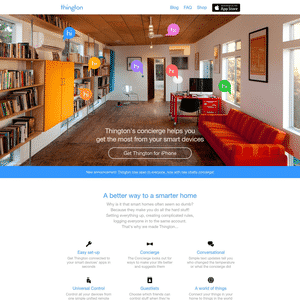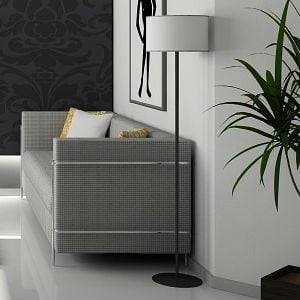
IoT Home Guide
Find and compare top Internet of Things Home Products and Systems. Quickly narrow your choices based on use, price and available integrations
The following handbook will:
- View product app reviews, and see if the devices can work with your Android or iOS smartphone or existing integration platform (ie: Home Kit, Samsung Smarthings, etc)
- Help you clear up confusion on which wireless connections you will need (WiFi, Bluetooth, GSM Cellular, etc)
- Filter based on product type (Energy Savings, DIY Systems, etc)
11/01/2019
Energy & Lighting
Rachio Smart Sprinkler Controller 2nd Gen
Highlights
- Auto weather adjustments
- WiFi Connectivity (Works with Echo, Nest, Wink, others)
- Get alerts when schedule changes..
Belkin WeMo Insight Switch
Highlights
- Set Schedules and receive customized notifications
- Amazon Echo, Nest and IFTTT Compatibility
- Wi-Fi enabled
SensorPush
Highlights
- Bluetooth Connectivity (300 ft range)
- Temp Range (-40°F - 140°F) and accuracy ±0.7°C / ±1.3°F typical
- Android and iOS apps
Neurio
Highlights
- Real-time energy monitoring
- Installation time of around 15 minutes on your breaker panel
ecobee4
Highlights
- Built-in Alexa Voice Service built in, so you can ask your ecobee to set a timer, read you the news, adjust the temperature, and more.
- Comes packaged with a temperature and humidity sensor you can place in your home.
Phillips Hue
Highlights
- Light schedules
- Apple HomeKit compatible
- Requires Bridge -- Philips Hue system supports up to 50 Philips Hue lights, luminaires, switches and other accessories.
Keen Home Smart Vent
Highlights
- Room-by-room Control (Typical house needs 4-8 smart vents) and auto-balancing mode
- Integrations with Nest, SmartThings, Lowes Iris
- Battery life: 2+ years and 802.15.4/ZigBee Comms
Access & Monitoring
August Smart Lock Pro 3rd Generation
Highlights
- Check your doors status when you are away from home
- Provide key codes to friends and family and use auto lock feature when you leave the house
- You need the Connect Wifi Bridge accessory device ($79) to control it remotely
GarageMate
Highlights
- Uses Bluetooth 4 (Approx 50 foot range)
- Up to 8 Android/iOS devices can be pired to one receiver
- 5 Minute installation
DIY & Open Source

OPENHAB
"A vendor and technology agnostic open source automation software for your home. Build your smart home in no time!"
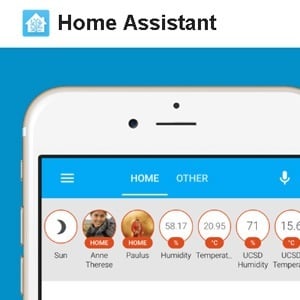
HOME ASSISTANT
"Home Assistant is an open-source home automation platform running on Python 3. Track and control all devices at home and automate control....

ECLIPSE SMART HOME
Eclipse SmartHome serves as an abstraction and translation framework that makes interaction possible across system and protocol boundaries.
Additional Projects
- Domoticz
- Mozilla Project Haiku
-
"An international joint venture between ABB, Bosch, and Cisco. We develop and operate an open software platform for the connected smart home."
- Supla
"Open Source building automation system based on Rasberry Pi, ESP8266 and Arduino " - Calaos
"A free software project (GPLv3) that lets you control and monitor your home."
Blogs
- Open Home Automation
- Sensors and Sensibility
By Frances Berriman documenting the process of turning her home into a smart home.
Websites / Resources
- SmartHomeDB
- MySensors
"We've combined the Arduino platform with a small radio transceiver into a fun, flexible world of low cost wireless sensors." - Raspberry Pi DIY
- Arduino DIY Projects
Companies
Investment and Acquisitions
A sample of Smart Home financial activity. For a more complete list visit out IoT Investment page.
Investments
Smart Home Companies
Looking for more startups targeting the connected home market?
Additional resources
Awards
Books
- Understanding the Connected Home - Peter Bihr and Michelle Thorne
- Smart technology can help conserve energy use at home - Phys.org
- What home automation project should we tackle? - Ars
- A Home Automation Primer - PCMag
- Wi-Fi Helps Appliances Think for Themselves - NYTimes
- Smart-Home Systems Go Mainstream - NYTimes
- Home Automation: The Unfulfilled Promise - TechNewsWorld
- Chasing a Habitable 'Home of the Future' - NPR 2006
- A 'Smart' Home, to Avoid the Nursing Home - NYTimes 2001
- Why home automation sucks, and why we still love it- Lelylan 2011
- Smartphones, the internet and the smart energy revolution - BBC 2011
- Watchers, carers, and administrators: the smart homes of tomorrow - Ars 2012
- A Rosie Future: Jetsons-Like Gadgets with "Ambient Intelligence" Are Key to Smart Homes and Cities - Scientific American
// Smart Home History
1913: First refrigerator for home use invented by Fred W. Wolf of Fort Wayne, Texas
1923: Le Corbusier writes "A house is a machine for living in" in Toward An Architecture
1935: First home clothes dryer
1957: Monsanto House of the Future
From 1957 to 1967 millions of visitors toured the Monsanto House, features include its intercom and climate control system, microwave, and ultrasonic dishwasher and of course plastic everywhere.
1966: Jim Sutherland, an engineer with the Westinghouse Corporation, created the machine known as the "Electronic Computing Home Operator," or ECHO IV
"Jim will experiment with the computer as a temperature-controlling device for the home. After interrogating weather instruments on the outside of the house, the computer will be programmed to compensate for weather changes and make automatic temperature and humidity adjustments on the inside."
1967: The Philco-Ford Corporation released a short film titled 1999 A.D looking at the home of the future.
- Video: Walter Cronkite in the Living Room of 2001 (1967)
1969: The Kitchen Computer was featured in the 1969 Neiman Marcus catalog as a $10,600 tool for housewives to store and retrieve recipes. With the tagline "If she can only cook as well as Honeywell can compute."
1969: BT Research created a film looking at the future of communications at home and at work including a wood-cladded display that is capable of transmitting and receiving documents via a UV light and photo sensitive paper.
1975: X10 Project was created by Pico Electronics of Glenrothes, Scotland
1984: The term "smart home" was coined by the American Association of Home Builders


















